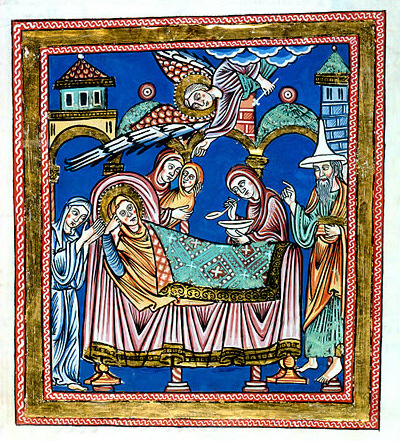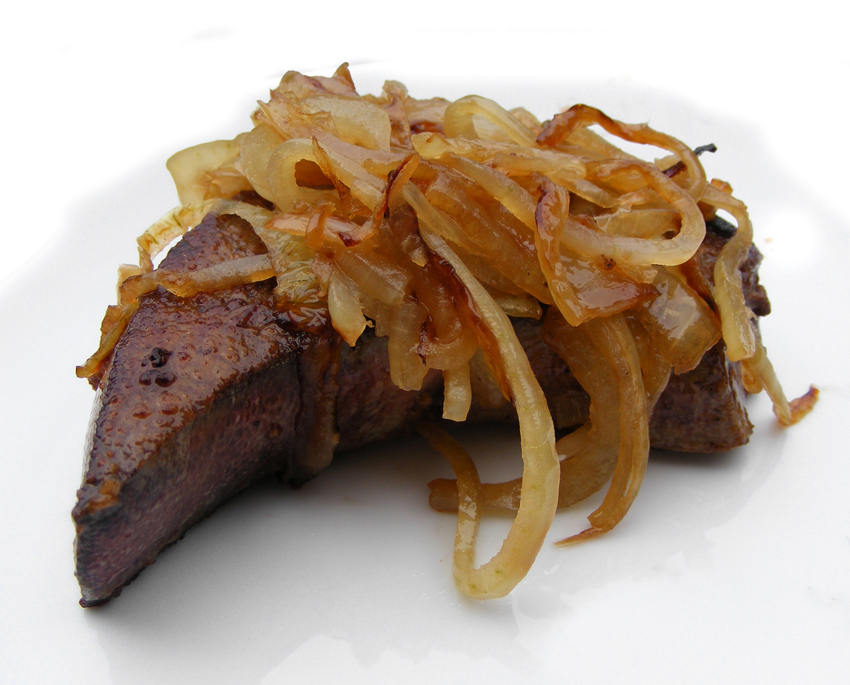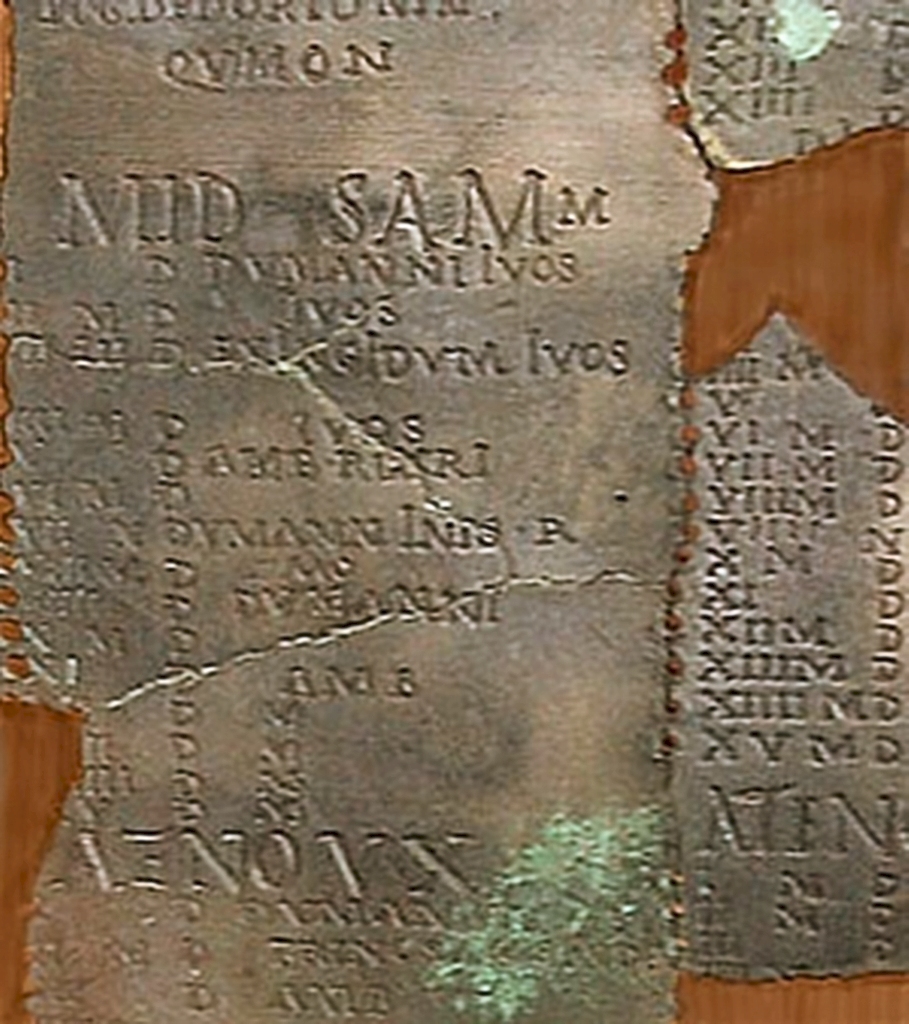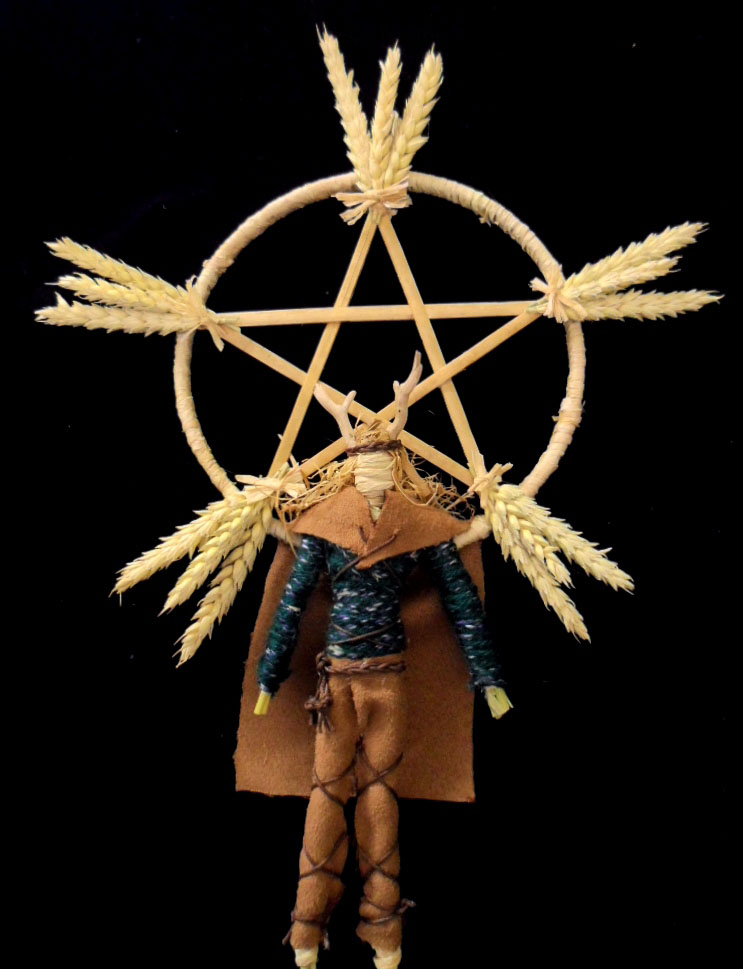|
Bannock (British Food)
A bannock is a variety of flatbread or quick bread cooked from flour, typically round, which is common in Scotland and other areas in the British Isles. They are usually cut into sections before serving. Etymology The word ''bannock'' comes from northern English and Scots dialects. The '' Oxford English Dictionary'' states the term stems from ''panicium'', a Latin word for "baked dough", or from ''panis'', meaning bread. It was first referred to as "" in early glosses to the 8th century author Aldhelm (d. 709), and its first cited definition in 1562. Its historic use was primarily in Ireland, Scotland and Northern England. The Scottish poet Robert Burns mentions a bannock in his ''Epistle to James Tennant of Glenconner'', in reference to Alexander Tennant. Early history The original bannocks were heavy, flat cakes of unleavened barley or oatmeal dough formed into a round or oval shape, then cooked on a griddle (or ''girdle'' in Scots). In Scotland, before the 19th cent ... [...More Info...] [...Related Items...] OR: [Wikipedia] [Google] [Baidu] |
Bere (grain)
Bere, pronounced "bear," is a six-row barley currently cultivated mainly on 5-15 hectares of land in Orkney, Scotland. It is also grown in Shetland, Caithness and on a very small scale by a few crofters on some of the Western Isles, ''i.e.'' North Uist, Benbecula, South Uist, Islay and Barra. It is probably Britain's oldest cereal in continuous commercial cultivation. Bere is a landrace adapted to growing on soils of a low pH and to a short growing season with long hours of daylight, as found in the high latitudes of northern Scotland. It is sown in the spring and harvested in the summer. Because of its very rapid growth rate it is sown late but is often the first crop to be harvested. It is known locally as "the 90-day barley." Etymology Originally ''bere'' or ''beir'' or ''bear'' is a generic Scots word for barley of any kind, from Old English ''bere'', "barley", and was used throughout the country. Now it is used mainly in the north of Scotland.Smout, T.C. (1972) ''A His ... [...More Info...] [...Related Items...] OR: [Wikipedia] [Google] [Baidu] |
Baking Powder
Baking powder is a dry chemical leavening agent, a mixture of a carbonate or bicarbonate and a weak acid. The base and acid are prevented from reacting prematurely by the inclusion of a buffer such as cornstarch. Baking powder is used to increase the volume and lighten the texture of baked goods. It works by releasing carbon dioxide gas into a batter or dough through an acid–base reaction, causing bubbles in the wet mixture to expand and thus leavening the mixture. The first ''single-acting'' baking powder, which releases carbon dioxide at room temperature as soon as it is dampened, was developed by food manufacturer Alfred Bird in England in 1843. The first ''double-acting'' baking powder, which releases some carbon dioxide when dampened, and later releases more of the gas when heated by baking, was first developed by Eben Norton Horsford in the U.S. in the 1860s. Baking powder is used instead of yeast for end-products where fermentation flavors would be undesirable, ... [...More Info...] [...Related Items...] OR: [Wikipedia] [Google] [Baidu] |
Michaelmas Bannock
Michaelmas ( ; also known as the Feast of Saints Michael, Gabriel, and Raphael, the Feast of the Archangels, or the Feast of Saint Michael and All Angels) is a Christian festival observed in some Western liturgical calendars on 29 September, and on 8 November in the Eastern tradition. Michaelmas has been one of the four quarter days of the English and Irish financial, judicial, and academic year. In Christian angelology, the Archangel Michael is the greatest of all the angels; he is particularly honored for defeating Lucifer in the war in heaven. History In the fifth century, a basilica near Rome was dedicated in honour of Saint Michael the Archangel on 30 September, beginning with celebrations on the eve of that day. 29 September is now kept in honour of Saint Michael and all Angels throughout some western churches. The name Michaelmas comes from a shortening of "Michael's Mass", in the same style as Christmas (Christ's Mass) and Candlemas (Candle Mass, the Mass where trad ... [...More Info...] [...Related Items...] OR: [Wikipedia] [Google] [Baidu] |
Marymas
The Nativity of the Blessed Virgin Mary, the Nativity of Mary, the Marymas or the Birth of the Virgin Mary, refers to a Christian feast day celebrating the birth of Mary, mother of Jesus. The modern canon of scripture does not record Mary's birth. The earliest known account of Mary's birth is found in the Gospel of James (5:2), an apocryphal text from the late second century, with her parents known as Saint Anne and Saint Joachim. In the case of saints, the Church commemorates their date of death, with Saint John the Baptist and the Virgin Mary as the few whose birth dates are commemorated. The reason for this is found in the singular mission each had in salvation history, but traditionally also because these alone were holy in their very birth (for Mary, see Immaculate Conception; John was sanctified in Saint Elizabeth's womb according to the traditional interpretation of ). Devotion to the innocence of Mary under this Marian title is widely celebrated in many cultures acro ... [...More Info...] [...Related Items...] OR: [Wikipedia] [Google] [Baidu] |
Hogmanay
Hogmanay ( , ) is the Scots word for the last day of the old year and is synonymous with the celebration of the New Year in the Scottish manner. It is normally followed by further celebration on the morning of New Year's Day (1 January) or in some cases, 2 January—a Scottish bank holiday. The origins of Hogmanay are unclear, but it may be derived from Norse and Gaelic observances of the winter solstice. Customs vary throughout Scotland, and usually include gift-giving and visiting the homes of friends and neighbours, with special attention given to the first-foot, the first guest of the new year. Etymology The etymology of the word is obscure. The earliest proposed etymology comes from the 1693 ''Scotch Presbyterian Eloquence'', which held that the term was a corruption of a presumed grc, ἁγία μήνη () and that this meant "holy month". The three main modern theories derive it from a French, Norse or Gaelic root. The word is first recorded in a Latin entry in ... [...More Info...] [...Related Items...] OR: [Wikipedia] [Google] [Baidu] |
Fallaid
Fallaid, in Scotland, was the dusting of meal left on the baking board, after a batch of bread has been baked. This dry meal was put on cakes when fired. An interesting custom used to prevail in the Outer Hebrides, where any meal remaining on the board would be made into a cake in the palm of the hand, and set to fire among the other and larger cakes. The custom has its origin in a superstition, that doing so keeps the store of meal from wasting. It also stems from the days when food was far less plentiful in Scotland and nothing could be wasted, except by the rich Rich may refer to: Common uses * Rich, an entity possessing wealth * Rich, an intense taste, flavor, color, sound, texture, or feeling **Rich (wine), a descriptor in wine tasting Places United States * Rich, Mississippi, an unincorporated ... and extravagant. See also (fallaid) Scottish folklore Scottish cuisine {{bread-stub ... [...More Info...] [...Related Items...] OR: [Wikipedia] [Google] [Baidu] |
Cod Liver
The liver of mammals, fowl, and fish is commonly eaten as food by humans (see offal). Pork, lamb, veal, beef, chicken, goose, and cod livers are widely available from butchers and supermarkets while stingray and burbot livers are common in some European countries. Animal livers are rich in iron, copper, the B vitamins and preformed vitamin A. Daily consumption of liver can be harmful; for instance, vitamin A toxicity has been proven to cause medical issues to babies born of pregnant mothers who consumed too much vitamin A. A single serving of beef liver exceeds the tolerable upper intake level of vitamin A. 100 g cod liver contains 5 mg of vitamin A and 100 µg of vitamin D. Liver contains large amounts of vitamin B12, and this was one of the factors that led to the discovery of the vitamin. Etymology From Middle English liver, from Old English , from Proto-Germanic , from Proto-Indo-European "to smear, smudge, stick", from Proto-Indo-European - "to be sl ... [...More Info...] [...Related Items...] OR: [Wikipedia] [Google] [Baidu] |
Samhain
Samhain ( , , , ; gv, Sauin ) is a Gaelic festival on 1 NovemberÓ hÓgáin, Dáithí. ''Myth Legend and Romance: An Encyclopaedia of the Irish Folk Tradition''. Prentice Hall Press, 1991. p. 402. Quote: "The basic Irish division of the year was into two parts, the summer half beginning at Bealtaine (May 1st) and the winter half at Samhain (November 1st) ... The festivals properly began at sunset on the day before the actual date, evincing the Celtic tendency to regard the night as preceding the day". marking the end of the harvest season and beginning of winter or "darker half" of the year. Celebrations begin on the evening of 31 October, since the Celtic day began and ended at sunset. This is about halfway between the autumnal equinox and winter solstice. It is one of the four Gaelic seasonal festivals along with Imbolc, Beltaine and Lughnasa. Historically it was widely observed throughout Ireland, Scotland, Galicia and the Isle of Man (where it is spelled Sauin). A si ... [...More Info...] [...Related Items...] OR: [Wikipedia] [Google] [Baidu] |
Lammas
Lammas Day (Anglo-Saxon ''hlaf-mas'', "loaf-mass"), also known as Loaf Mass Day, is a Christian holiday celebrated in some English-speaking countries in the Northern Hemisphere on 1 August. The name originates from the word "loaf" in reference to bread and " Mass" in reference to the Eucharist. It is a festival in the liturgical calendar to mark the blessing of the First Fruits of harvest, with a loaf of bread being brought to the church for this purpose. On Loaf Mass Day, it is customary to bring to a Christian church a loaf made from the new crop, which began to be harvested at Lammastide, which falls at the halfway point between the summer solstice and autumn September equinox. Christians also have church processions to bakeries, where those working therein are blessed by Christian clergy. Lammas has coincided with the feast of St. Peter in Chains, commemorating St. Peter's miraculous deliverance from prison, but in the liturgical reform of 1969 the feast of St. A ... [...More Info...] [...Related Items...] OR: [Wikipedia] [Google] [Baidu] |
Lughnasadh
Lughnasadh or Lughnasa ( , ) is a Gaelic festival marking the beginning of the harvest season. Historically, it was widely observed throughout Ireland, Scotland and the Isle of Man. In Modern Irish it is called , in gd, Lùnastal, and in gv, Luanistyn. Traditionally it is held on 1 August, or about halfway between the summer solstice and autumn equinox. In recent centuries some of the celebrations have been shifted to the Sunday nearest this date. Lughnasadh is one of the four Gaelic seasonal festivals, along with Samhain, Imbolc and Beltane. It corresponds to other European harvest festivals such as the Welsh and the English Lammas. Lughnasadh is mentioned in some of the earliest Irish literature and has pagan origins. The festival itself is named after the god Lugh. It inspired great gatherings that included religious ceremonies, ritual athletic contests (most notably the Tailteann Games), feasting, matchmaking, and trading. Lughnasadh occurred during a very poor ... [...More Info...] [...Related Items...] OR: [Wikipedia] [Google] [Baidu] |
Beltane
Beltane () is the Gaelic May Day festival. Commonly observed on the first of May, the festival falls midway between the spring equinox and summer solstice in the northern hemisphere. The festival name is synonymous with the month marking the start of summer in Ireland, May being ''Mí na Bealtaine''. Historically, it was widely observed throughout Ireland, Scotland, and the Isle of Man. In Irish the name for the festival day is (), in Scottish Gaelic (), and in Manx Gaelic /. Beltane is one of the principal four Gaelic seasonal festivals—along with Samhain, Imbolc, and Lughnasadh—and is similar to the Welsh . Bealtaine is mentioned in the earliest Irish literature and is associated with important events in Irish mythology. Also known as ("first of summer"), it marked the beginning of summer and was when cattle were driven out to the summer pastures. Rituals were performed to protect cattle, people and crops, and to encourage growth. Special bonfires were kindled ... [...More Info...] [...Related Items...] OR: [Wikipedia] [Google] [Baidu] |
Brigit Of Kildare
Saint Brigid of Kildare or Brigid of Ireland ( ga, Naomh Bríd; la, Brigida; 525) is the patroness saint (or 'mother saint') of Ireland, and one of its three national saints along with Patrick and Columba. According to medieval Irish hagiographies, she was an abbess who founded several convents of nuns, most notably that of Kildare, which was one of the most important in Ireland. There are few historical facts about her, and early hagiographies are mainly anecdotes and miracle tales, some of which are rooted in pagan folklore.Farmer, David. ''The Oxford Dictionary of Saints'' (Fifth Edition, Revised). Oxford University Press, 2011. p.66 She is patroness of many things, including poetry, learning, healing, protection, blacksmithing, livestock and dairy production. The saint shares her name with a Celtic goddess. Brigid's feast day is 1 February, which was originally a pre-Christian festival called Imbolc, marking the beginning of spring. From 2023 it will be a public holida ... [...More Info...] [...Related Items...] OR: [Wikipedia] [Google] [Baidu] |










